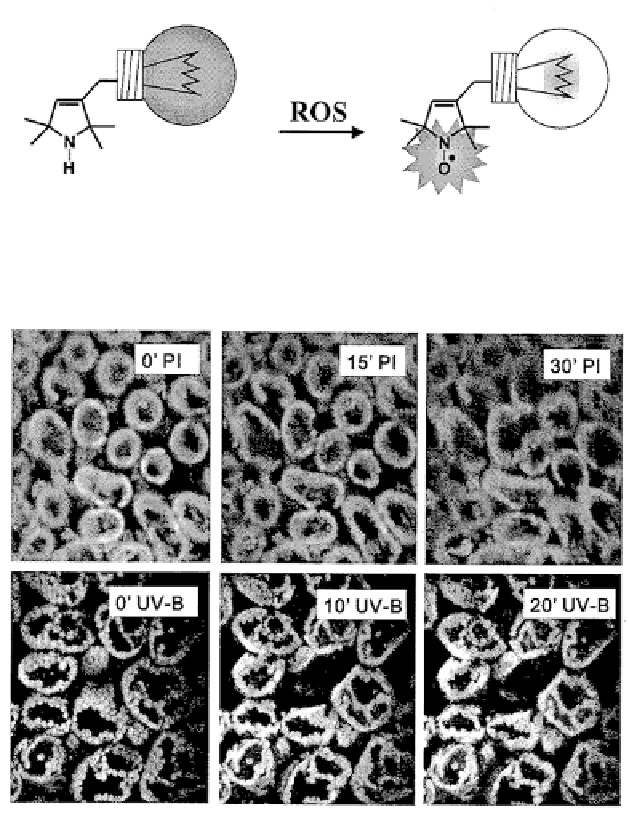Environmental Engineering Reference
In-Depth Information
equal loss of photosynthetic function in 30 min PI and 20 min UV-B, the fluorescence
of the infiltrated singlet oxygen trap (DanePy, [43]) decreased only during PI but not in
UV-B stress in chloroplasts (Fig.6). This experiment confirmed that singlet oxygen is
not the dominant ROS form in UV-B induced oxidative damage. It is also interesting to
note UV induced morphological changes in cell structure.
Fig. 5. The principle of ROS detection by a double (fluorescent and spin) sensor. Upon reacting with ROS, the
sensor is converted into a nitroxide radical and its fluorescence is partly quenched.
Fig. 6. Singlet oxygen detection in Arabidopsis leaves under stress by excess photosynthetically active
radiation (upper panel) and by UV-B irradiation (lower panel). Leaves were infiltrated with the singlet
oxygen sensor, which penetrates into the chloroplasts. Both types of light stress conditions (30 min PI
and 20 min UV-B) resulted in 45% loss of photosynthetic activity.

Search WWH ::

Custom Search